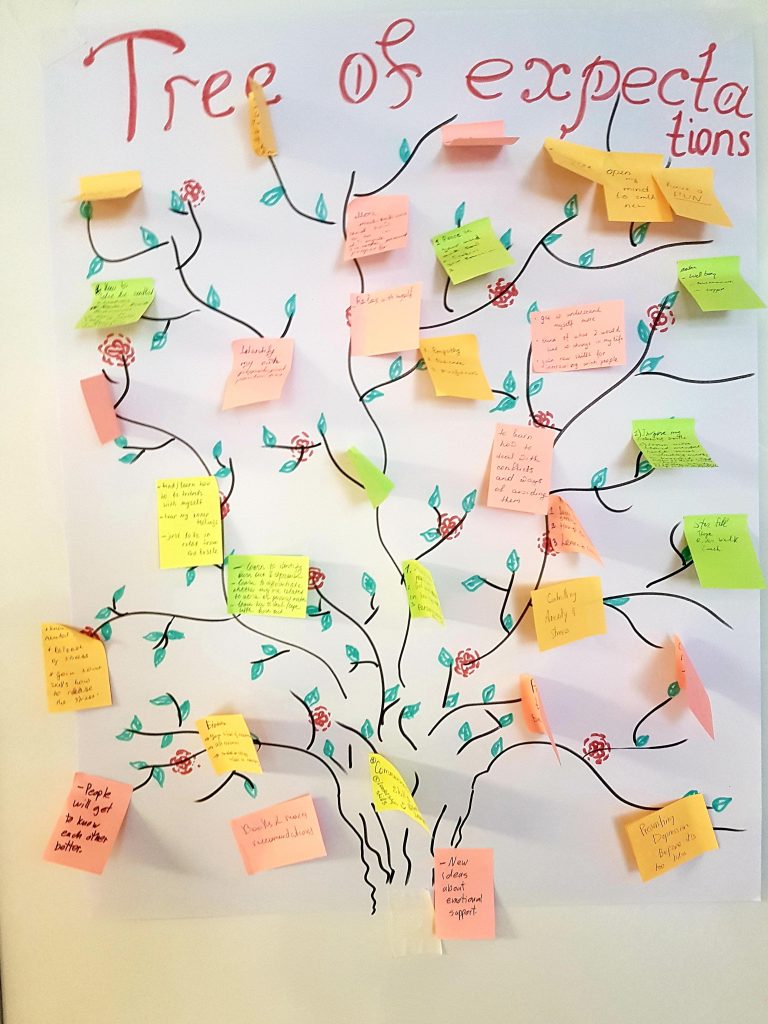4 Tree of Expectations

Purpose
It is important for facilitators and the group as a whole to articulate their reasons for coming to the session and what they are hoping to leave with. Based on the expectations expressed, facilitators might need to clarify what is and is not possible within the mandate of the learning event. Or, if there is flexibility, facilitators might decide to make some changes to the program based on learning about people’s particular needs and hopes.
Learning Objectives
Participants will
- Reflect on personal hopes for the program.
- Listen to the aspirations and expectations of their group mates.
- Clarify what is and isn’t possible within the parameters of the learning event.
- Identify what elements will make the learning meaningful and successful.
Activity Directions:
- Create trunk and branches: Facilitator with volunteers should create the trunk and branches of a tree ahead of time.
- Ask participants how will they know if this workshop or program has been helpful? What are they hoping to take away into their personal or professional lives? What are their expectations of this learning event?
- Write: Hand-out 3 sticky notes or paper leaves to each participant. Ask them to write their hopes and expectations on the sticky note and then stick it to the tree.
- Reflect and Clarify: Facilitator reads the notes and comments on overall themes and how these expectations fit with the faciliator or institution’s vision of the workshop.
Key Takeaway
- When facilitators are debriefing the introductory session and doing planning follow-ups, they might want to adjust some of their content or schedule to meet the needs expressed by participants.
- Leave the tree in the workshop room for the duration of the learning session. Part of the final evaluation can include looking again at these expectations and checking to what extent the overall goals and hopes were met.
Resources Needed
- Big piece of chart paper
- Sticky Notes of coloured paper cut into leaves
- Pens for each person
- Tape for chart paper and leaves if not self-adhesive.
Online Adaptation
This is also an important topic for online workshops. Participants’ expectations could be expressed in the chat-box or you could post the link and have their input collated on sites like Mentimeter or Padlet. The statements will immediately show up in wordclouds or sticky boards with people’s ideas and reflections that can be seen on the Zoom or Teams screens.
Variation
A similar exercise also invites participants to articulate and share their fears about the session or program:
“Participants’ expectations and fears concerning the training become visible. It
seems important to discuss inadequate and unrealistic expectations before the
training modules start and to give further information regarding the fears.”
A simplified version of this excercise, when it is a small group, is to simply go around the circle and have everyone express their hopes and fears about the upcoming learning program. It is helpful for the participants to share their worries and expectations and equally important for the facilitators to learn about some of the underlying currents in the group.
